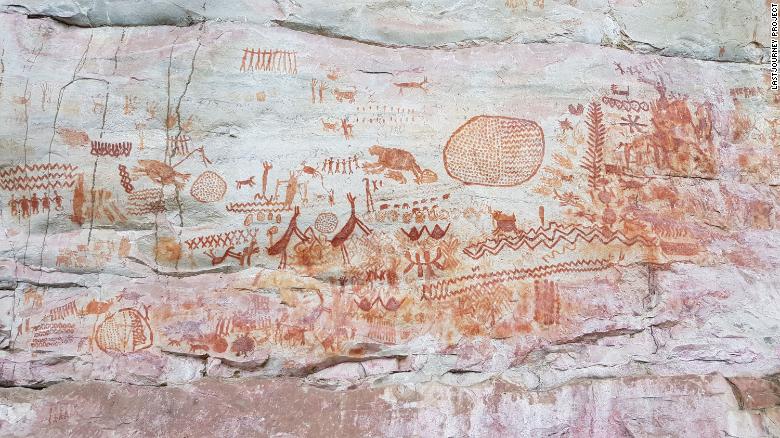
© CNN News
Pre-reading questions:
I will read each question. Then, please answer them.
講師がそれぞれの質問を読むので答えましょう。
- Do you like going to museums?
- What is your favorite animal?
Vocabulary:
I will read the words, meanings, and sample sentences. Then, repeat after me.
単語、意味、例文を読みます。講師に続いて音読しましょう。
- jungle /JUNHNG-guhl/
- beast /beest/
- believe /bih-LEEV/
- vanished /VAN-isht/
- sloth /slohth/
[noun] – a tropical forest in which trees and plants grow very closely together
Tigers live in this jungle.
[noun] – an animal, especially a large or wild one
In Texas, raccoons are considered wild beasts.
[verb] – to think that something is true, correct, or real
I believe the package will arrive tomorrow.
[adjective] – not now present or existing
The vanished Malaysia Airlines Flight 370 remains a mystery until today.
[noun] – a mammal that moves slowly and lives in trees
Did you know that sloths are blind during the day?
Article reading:
Please read the whole article. Then, I will check your pronunciation and intonation.
記事を音読しましょう。講師はあなたの発音とイントネーションを確認します。
New research reveals that extinct giants are among the animals shown in an 8-mile-long (13-kilometer-long) frieze of rock paintings at Serrana de la Lindosa in the Colombian Amazon jungle — art created by some of the region’s oldest humans. Early humans may have come across the giant beasts and painted them in a naturalistic manner that emphasizes the animals’ noticeable physical features, according to study author and university professor Jose Iriarte. However, the discovery of “extinct megafauna” among the beautiful paintings is uncertain. While Iriarte acknowledges that the new research does not confirm this theory, he believes they have evidence of early human contact with some of the world’s vanished giants. The five animals discovered in the study are: a giant ground sloth with massive claws, a gomphothere (an elephant-like creature with a domed skull, flared ears, and a trunk), an extinct lineage of the horse with a thick neck, a camelid like a camel or a llama, and a three-toed ungulate with a trunk.
True or False:
Read the sentences and identify if they are true or false based on the article.
文章を読んで、記事に基づいて正誤を答えましょう。
- Extinct giants are among the animals shown in an 8-mile-long frieze of rock paintings at Serrana de la Lindosa.
- The rock paintings were made by some of the Colombian Amazon jungle’s oldest humans
- The discovery of “extinct megafauna” among the beautiful paintings is certain.
- Jose Iriarte believes his team has evidence of early human contact with the giant animals.
- Four animals were discovered in the study.
Fill in the blanks:
Choose the correct word from the table then fill in the blanks.
適切な言葉を選んで空欄を埋めましょう。
| jungle | beast | believe | vanished | sloth |
- These ruins are a reminder of a _______ kingdom.
- The mountain area is covered in _______. Be careful not to get lost.
- _______ move faster in water than on land.
- A wild _______ was seen in the city a few hours ago.
- My father _______ this to be the finest wine.